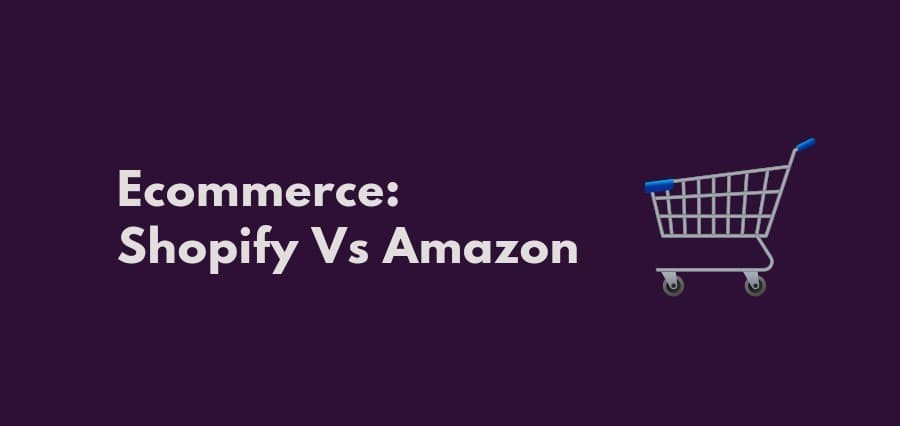This is a question that divides many eCommerce entrepreneurs, and while there isn’t an easy answer that suits everyone, we can compare the pros and cons.There are lots of options for merchants when it comes to choosing an e-commerce platform.Shopping cart solutions like Shopify and WooCommerce offer small business owners the ability to build, run and manage their online stores with ease. The obvious benefit is the cost – both platforms are free to use at basic levels. That said, there can be a number of benefits in using larger platforms like Amazon’s e-commerce services especially with the amazon rank tracker, depending on your needs.
Plan Comparison
Shopify offers two different plans: Basic Shopify which allows you to do $0 in sales before you have to pay $29/month; then Shopify Unlimited, where there are no monthly fees if you make $2,000 / month or less. Shopify’s fees are very simple, with the lowest being $29/month which covers unlimited products, support for 100 orders per month, etc.
Amazon has three different types of solutions for your business needs – Individual Seller Accounts are free to use but have limited features; Professional accounts are $39.99/month and offer some additional benefits over the individual accounts; while Merchant Solutions account costs $0.45 + 8% of sales you make each month (which is still relatively cheaper than Shopify).
Shopify makes it easy to set up an online store and manage inventory and customers across multiple channels such as Facebook and Instagram. This platform comes with a number of apps that deliver extra functionality like email marketing campaigns, abandoned cart recovery, etc.
Amazon’s e-commerce business solution does not charge for different types of accounts or on a per transaction basis. For example, if you want to sell your products on Amazon.com as well as Amazon.ca, you are able to do that without any extra fees – which can be an attractive feature for some sellers.
Shopify Pros
Image source: https://unsplash.com/photos/4MRqV9gcUHQ
- Beginner friendly, in other words for people who aren’t quite tech savvy yet. It’s very user friendly, likely making it easier to get started with than Amazon.
- Higher quality themes (therefore more aesthetically pleasing websites).
- Offers Point of Sale (POS) options – useful if you’re selling in person too.
- More detailed analytics/statistics. Specifically Shopify makes it easier to track Google Analytics data.
- More user friendly email campaign tool.
- Easily create a ‘website’ that’s actually just an online storefront with the click of a button, without needing to design it yourself or use complicated web development tools like when using Amazon Webstore (Shopify has their own).
- Newer technology (note: this doesn’t impact much but is still worth mentioning)
- Integration with multiple apps/software platforms
- Lower entry level costs than Amazon! It’s $14 per month for their basic package which allows you to sell unlimited items and access the aforementioned features, while Amazon Webstore is $39.99 per month.
Shopify Cons
- eCommerce websites must be hosted by Shopify, meaning your site won’t have it’s own unique URL nor domain name. This is not a problem if you’re branding isn’t focused around your website/company name (for example if you were using the online storefront purely as an extension to an existing brick and mortar store) but can be a drawback for people looking to make a more serious business out of their online shop.
- Must purchase SSL certificate through Shopify in order to encrypt sensitive information sent from customers’ computers to yours when completing transactions on your shop’s online storefront.
- Refunds/returns can become complicated for both you and your customer. Shopify takes care of this automatically if an item is defective, but otherwise you’ll have to manually refund/send a replacement order to the customer yourself.
- Depending on your goods and whether they’re handmade you may want superior image quality than Shopify’s stock images allow (i.e. no restrictions on resolution or file size).
- Not so great at supporting multiple languages (though it does support some).
- Email marketing tools not as advanced as most others (if opting for Shopify’s ‘Basic’ plan)
Amazon Pros
Image source: https://unsplash.com/photos/rymh7EZPqRs
- Great community! If there’s ever a question that can’t be answered by Google then chances are someone has asked it on Amazon’s help boards, making customer support very accessible.
- Integrates with Zapier – a website that allows for automatic integrations between multiple apps/software platforms. For example if you’re using Shopify then you can share all of your new orders to an Excel spreadsheet within seconds by creating a Zap through Zapier.
- Allows you to create your own URL (not just ‘website’, but the whole thing…including the domain name).
- No SSL certificate needed! This means no extra fees and all information sent from customers’ computers to yours during transactions is encrypted already.
- Easily set up pages upon request or according to product type i.e clothing, shoes etc for ease of navigation for people browsing your store.
Amazon Cons
- You must pay extra to access detailed analytics/statistics. – Customization work is done through HTML and CSS which can get complicated, especially if you’re not tech savvy. You’ll also have to pay someone else to design it for you if you’re not comfortable doing it yourself or using a web development tool like Shopify’s ‘Build your own theme’ option.
- For bespoke/unique stock images you need to either take them yourself (if they are small enough) or hire a photographer, which costs money.
- Customer support isn’t great compared to Shopify’s. Most common questions can be answered with Google, but it’s good to give yourself a point of reference in case you can’t find the answer.
Wrapping it up:
If I was starting my online store (or rather, expanding my current one) from scratch and didn’t have any brand recognition then I’d opt for Shopify without thinking twice. It takes care of pretty much everything and is incredibly easy/simple to set up which is great if you’re just starting out.
But if you have an existing business with loyal customers who are integrated into your branding i.e their ‘shopping experience’ feels more personal because they’ve learnt about your brand through repeat visits or interaction with you then Amazon might be worth considering despite its higher entry level costs, especially since having control over your brand is so important.


